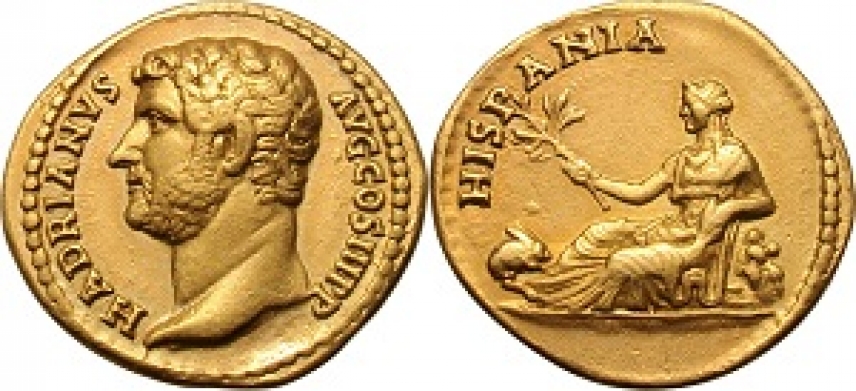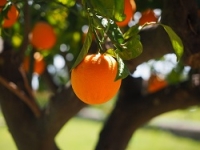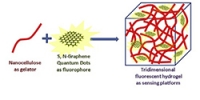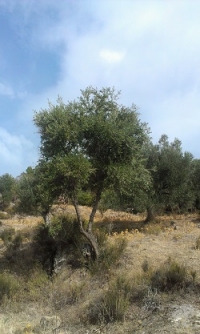UCO coordinates a new report on the Roman roots of European civilisation
Escrito por UCC+i
A study published in the journal Andalucía en la Historia hails the Roman Empire as history’s first globalised society
What aspects of Roman civilisation still survive today? We might equally ask ‘What aspects no longer survive?, according to the findings of research by Enrique Melchor Gil, Professor of Ancient History at the University of Córdoba, focusing on Rome’s legacy to present-day civilisation.
The research results, published recently in the journal Andalucía en la Historia, show that current town planning systems, municipal life, law, art and literature are all derived from, or based on, Roman models. According to Prof. Melchor Gil, “Surviving features of Roman society are to be found equally in Andalusia, Europe and the United States”; examples include the layout of today’s cities, which follows Roman patterns, and the way we pay tribute to great men. The Roman Empire also established Europe’s first monetary union, as a means of “pursuing one of the goals of the current European Union, the creation of a single economic space”.
Research reveals the efficacy of a new antibiotic active against pneumonia
Escrito por UCC+iA research group at the Department of Biochemistry and Molecular Biology, University of Córdoba, has studied the effects of rhodomyrtone on pneumococcal strains.
The emergence of antibiotic resistance in some of the most common pathogenic bacteria affecting humans has become a healthcare problem worldwide. Due to natural selection, the mere use of antibiotics against a pathogenic bacterial species eventually prompts them to develop resistance to those antibiotics.
Researchers block liver cancer in rats using a molecule found in citrus fruits
Escrito por UCC+iThe incidence of tumoral nodes fell to virtually zero in rats receiving hesperidin
Hesperidin is a molecule belonging to the flavonoid group, found in the pith of certain citrus fruits. It is believed to play a major role in plant defence systems, and recent research suggests that it could be used to fight hepatocellular carcinoma, the fifth most frequently-diagnosed malignancy worldwide and the third most common cause of cancer-related death.
Portable NIRS sensors enable instant analysis of milk composition in individual samples
Escrito por UCC+iThis applied technology uses a portable NIRS instrument for the on-farm measurement of milk nutritional components such as fat and protein content
This technique for the instant in situ monitoring of nutrient composition in individual cow’s milk samples, which obviates the need for laboratory analysis, was developed by a research team belonging to the AGR-128 research group at the University of Córdoba Faculty of Forestry and Agricultural Engineering, headed by Professors Dolores Pérez Marín and Ana Garrido Varo. The portable equipment, which can be used anywhere, takes only tenths of a second to measure major milk components such as protein, fat and dry extract; since there is no need to send samples to a laboratory and wait for results, a considerable amount of time can be saved.
Development of an easy-to-use eco-friendly fluorescent enzyme detection platform
Escrito por UCC+iThe platform, developed by a research group at the University of Córdoba Department of Analytical Chemistry, has been tested measuring laccase enzyme concentrations in various shampoo samples.
Enzymes are amongst the most widely-used biocatalysts, applicable – thanks to their broad range of properties – in a whole range of fields. There is thus a need for efficient enzyme detection methods.
The wild olive genome accounts for high oleic acid concentrations in olives
Escrito por UCC+iAn international team including researchers from the University of Cordoba has sequenced the wild olive (oleaster) genome and identified the genetic singularities accounting for high oleic acid concentrations in the olive; their findings could be of value for plant breeding with a view to enhancing production
Monte Testaccio – an artificial mound in Rome composed of fragments of oil amphorae – provides physical proof of the importance of olive oil production around 2300 years ago. These broken shards tell the story of what might be regarded as one of mankind’s oldest industries. But there are other, much older, accounts involving oil. They were unearthed at around the same time as the fragments forming Monte Testaccio, when the 19th-century craze for archaeology led scientists to attempt to explain everything, including the past. A few kilometres further east, on the island of Crete, where Mediterranean Europe meets the Middle East, a number of tablets were found containing records on olive-growing dating back around 4500 years, in other words about a thousand years before the Genesis flood narrative, in which a dove brings back an olive branch in its beak, as proof that the waters had receded.







